Correction: In a review in our previous issue (Volume 29 No 5) the bass player on John Herberman’s album Spring Comes Early was incorrectly identified as Jim Vivian. In actuality the “sinuous, emotive bass” playing referred to was that of Paul Novotny. The WholeNote apologizes for the error. Lesley Mitchell-Clarke’s review of Novotny’s own latest album Summertime in Leith, which features duets with Robi Botos, leads off the Jazz and Improvised review section further on in these pages.
I enjoy connections, and excuses to revisit my vinyl collection, and in this issue I found several. While editing Yoshi Maclear Wall’s review of Disaster Pony in the Jazz and Improvised Section below, I was struck by his comments about the interplay between cello and saxophone. It put me in mind of the first time I encountered saxophone in a classical context in a 1965 recording of Kabalevsky’s Cello Concerto No.2 featuring its dedicatee Daniil Shafran with the Leningrad Philharmonic. About halfway through the work there is a cello cadenza followed by a phrenetic orchestral tutti in which a saxophone takes up the cello’s theme. On first listening, it took several seconds to assimilate what I was hearing. When the cello takes back the theme a minute later, I was amazed to realize just how alike the two seemingly disparate instruments could sound. It was a revelation. So, Yoshi’s review sent me rooting around my vinyl collection to come up with the old Melodyia/Angel LP. What a joy to revisit that seminal recording.
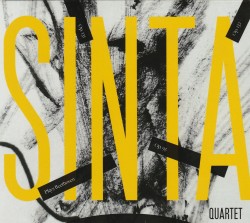 The next excuse for a deep dive came as a result of a CD which I didn’t at first think I would be reviewing, Sinta Quartet Plays Beethoven (Bright Shiny Things BSTC-0196 brightshiny.ninja). Now Sinta is a saxophone quartet, and I must say my initial skepticism was not allayed by the opening movement of Beethoven’s “Serioso” String Quartet No.11 in F Minor, Op.95. It was as if I was hearing the soundtrack of a Roadrunner cartoon, or maybe the Keystone Kops. I decided to withhold judgement, however, and skipped ahead to the centrepiece of the disc, the prayer-like third movement of String Quartet No.15 in A Minor, Op.132. From there I was drawn into the fugal opening of String Quartet No.14 in C-Sharp Minor, Op.131 and sat transfixed throughout its seven movements. I was immediately taken by the effectiveness of Dan Graser’s transcriptions, although I found the upper range of the soprano saxophone at times a bit shrill. To contrast that, the rich fullness of the baritone sax, far exceeding the depths of a cello, was captivating. I was surprised to find myself spending more time with this disc than any other in recent memory. Over the period of a month, I pulled out half a dozen versions of the string quartets, from my first vinyl recordings with the Yale String Quartet on the Vanguard Cardinal label and the Guarneri on RCA, through Orford and Italiano quartet LPs, to CDs featuring the Alban Berg, Tokyo (with Peter Oundjian) and Alcan quartets, all juxtaposed with repeated listenings to the saxophone versions. I’m not suggesting that saxophone arrangements will replace the originals in my heart, and pride of place for Op.132 still goes to the Orford Quartet’s digital recording on a Delos CD, but I’m pleased have this alternate take in my collection, much in the way that I appreciate Marion Verbruggen’s performance of Bach Cello Suites on the recorder – an interesting and enchanting new perspective.
The next excuse for a deep dive came as a result of a CD which I didn’t at first think I would be reviewing, Sinta Quartet Plays Beethoven (Bright Shiny Things BSTC-0196 brightshiny.ninja). Now Sinta is a saxophone quartet, and I must say my initial skepticism was not allayed by the opening movement of Beethoven’s “Serioso” String Quartet No.11 in F Minor, Op.95. It was as if I was hearing the soundtrack of a Roadrunner cartoon, or maybe the Keystone Kops. I decided to withhold judgement, however, and skipped ahead to the centrepiece of the disc, the prayer-like third movement of String Quartet No.15 in A Minor, Op.132. From there I was drawn into the fugal opening of String Quartet No.14 in C-Sharp Minor, Op.131 and sat transfixed throughout its seven movements. I was immediately taken by the effectiveness of Dan Graser’s transcriptions, although I found the upper range of the soprano saxophone at times a bit shrill. To contrast that, the rich fullness of the baritone sax, far exceeding the depths of a cello, was captivating. I was surprised to find myself spending more time with this disc than any other in recent memory. Over the period of a month, I pulled out half a dozen versions of the string quartets, from my first vinyl recordings with the Yale String Quartet on the Vanguard Cardinal label and the Guarneri on RCA, through Orford and Italiano quartet LPs, to CDs featuring the Alban Berg, Tokyo (with Peter Oundjian) and Alcan quartets, all juxtaposed with repeated listenings to the saxophone versions. I’m not suggesting that saxophone arrangements will replace the originals in my heart, and pride of place for Op.132 still goes to the Orford Quartet’s digital recording on a Delos CD, but I’m pleased have this alternate take in my collection, much in the way that I appreciate Marion Verbruggen’s performance of Bach Cello Suites on the recorder – an interesting and enchanting new perspective.
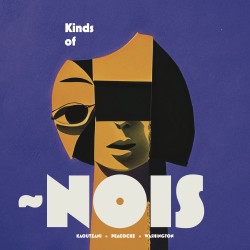 I had no qualms whatsoever about Kinds of ~Nois, a recording of original works for saxophone quartet written by the members of the composers collective Kinds of Kings for the Chicago-based quartet ~Nois (Bright Shiny Things BSTC-0197 brightshiny.ninja). Presented in reverse chronology, the disc is bookended by two works by Gemma Peacocke, the recent Hazel, inspired by a poem by Pablo Neruda, and Dwalm, which represents the first collaboration between the two groups back in 2018. Shelley Washington’s Eternal Present is in two movements: I. Now and II. Always. The first features gently moving cloud-like clusters; the second is more playful and percussive, with echoes and games of tag. Maria Kaoutzani’s Count Me In is an “exploration of rhythm and drive inspired by Afro-Cuban bata traditions, made up of interlocking rhythmic patterns” which at times give way to drone-like stasis. Washington returns to narrate her poem BIG TALK and then to perform one of the two baritone sax parts in the duet of the same name, “an outcry against rape culture designed to be an endurance piece for the performers in solidarity with women forced to endure a daily barrage of physical abuse.” An “intentionally confrontational” work, BIG TALK exploits fully the range and power of the baritone instrument in a wild and varied ride lasting 11 minutes, with driving minimalist low ostinati and occasional hints of Harlem Nocturne on speed. Kaoutzani’s Shore to Shore provides respite with its quiet tribute to the sea, “with echoes of a Cypriot lullaby the composer’s grandmother used to sing to her.” Dwalm is an old Scottish word meaning both stupor or daydream and to faint or fall ill. “The composer pursues that idea by contrasting lullabies with cries of sorrow […] in the context of the same underlying darkness of oblivion,” although the density of layers and accelerated tempi keep despair at bay.
I had no qualms whatsoever about Kinds of ~Nois, a recording of original works for saxophone quartet written by the members of the composers collective Kinds of Kings for the Chicago-based quartet ~Nois (Bright Shiny Things BSTC-0197 brightshiny.ninja). Presented in reverse chronology, the disc is bookended by two works by Gemma Peacocke, the recent Hazel, inspired by a poem by Pablo Neruda, and Dwalm, which represents the first collaboration between the two groups back in 2018. Shelley Washington’s Eternal Present is in two movements: I. Now and II. Always. The first features gently moving cloud-like clusters; the second is more playful and percussive, with echoes and games of tag. Maria Kaoutzani’s Count Me In is an “exploration of rhythm and drive inspired by Afro-Cuban bata traditions, made up of interlocking rhythmic patterns” which at times give way to drone-like stasis. Washington returns to narrate her poem BIG TALK and then to perform one of the two baritone sax parts in the duet of the same name, “an outcry against rape culture designed to be an endurance piece for the performers in solidarity with women forced to endure a daily barrage of physical abuse.” An “intentionally confrontational” work, BIG TALK exploits fully the range and power of the baritone instrument in a wild and varied ride lasting 11 minutes, with driving minimalist low ostinati and occasional hints of Harlem Nocturne on speed. Kaoutzani’s Shore to Shore provides respite with its quiet tribute to the sea, “with echoes of a Cypriot lullaby the composer’s grandmother used to sing to her.” Dwalm is an old Scottish word meaning both stupor or daydream and to faint or fall ill. “The composer pursues that idea by contrasting lullabies with cries of sorrow […] in the context of the same underlying darkness of oblivion,” although the density of layers and accelerated tempi keep despair at bay.
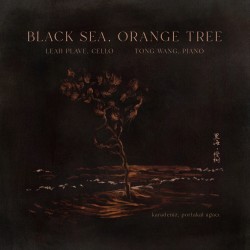 Leah Plave is a cellist currently based in The Netherlands who holds degrees from universities in Cincinnati, Montreal, Budapest and Den Haag. While studying at McGill she served as artistic director and cellist for the Montreal Music Collective. Tong Wang is a Canadian pianist and collaborative artist active in performance, research and community engagement. The Canada Council-funded Black Sea, Orange Tree (Leaf Music leahplave.com) features the two in works for cello and piano by Turkish composer Fazil Say and Canadian Alice Ping Yee Ho. Each four-movement work depicts specific places in colourful aural portraits of the Republic of Türkiye and the People’s Republic of China respectively, and in each, the cello is called upon to replicate sounds of traditional instruments. Say’s Dört Şehir (Four Cities) is a journey through culturally diverse regions of Anatolia (Asia Minor) with stops at Sivas (a conservative city in Eastern Anatolia), Hopa (represented by a traditional wedding dance), Ankara (the capital city of Turkey under Atatürk in 1923), and finally Bodrum (known as the “St. Tropez of Turkey”). This last is a boisterous, jazz-inspired romp with “an abrupt and absurd conclusion in its depiction of a pub brawl as frequently experienced in this city.” Ho’s Four Impressions of China portray Hunan, Tibet, Heilongjiang and her birthplace, Hong Kong. The composer tells us that the music of Hunan takes a Chinese folk song as its point of departure. Tibet is an “imaginary train ride through the Himalayas to the city of Lhasa.” The Black Dragon River, one of China’s four great rivers, is the inspiration for Heilongjiang as the composer imagines a dance of the Black Dragon to symbolize the province’s fierce winters and dormant volcanoes. Hong Kong captures night scenes where locals “...gather at the harbour and lively night markets. Music unfolds the magical view of the Victoria Harbor glittering with city lights; there are the sounds of street performers singing and playing traditional instruments.” In these diverse portraits both performers have shown consummate command of their western instruments while adapting them admirably to create convincing Asian soundscapes.
Leah Plave is a cellist currently based in The Netherlands who holds degrees from universities in Cincinnati, Montreal, Budapest and Den Haag. While studying at McGill she served as artistic director and cellist for the Montreal Music Collective. Tong Wang is a Canadian pianist and collaborative artist active in performance, research and community engagement. The Canada Council-funded Black Sea, Orange Tree (Leaf Music leahplave.com) features the two in works for cello and piano by Turkish composer Fazil Say and Canadian Alice Ping Yee Ho. Each four-movement work depicts specific places in colourful aural portraits of the Republic of Türkiye and the People’s Republic of China respectively, and in each, the cello is called upon to replicate sounds of traditional instruments. Say’s Dört Şehir (Four Cities) is a journey through culturally diverse regions of Anatolia (Asia Minor) with stops at Sivas (a conservative city in Eastern Anatolia), Hopa (represented by a traditional wedding dance), Ankara (the capital city of Turkey under Atatürk in 1923), and finally Bodrum (known as the “St. Tropez of Turkey”). This last is a boisterous, jazz-inspired romp with “an abrupt and absurd conclusion in its depiction of a pub brawl as frequently experienced in this city.” Ho’s Four Impressions of China portray Hunan, Tibet, Heilongjiang and her birthplace, Hong Kong. The composer tells us that the music of Hunan takes a Chinese folk song as its point of departure. Tibet is an “imaginary train ride through the Himalayas to the city of Lhasa.” The Black Dragon River, one of China’s four great rivers, is the inspiration for Heilongjiang as the composer imagines a dance of the Black Dragon to symbolize the province’s fierce winters and dormant volcanoes. Hong Kong captures night scenes where locals “...gather at the harbour and lively night markets. Music unfolds the magical view of the Victoria Harbor glittering with city lights; there are the sounds of street performers singing and playing traditional instruments.” In these diverse portraits both performers have shown consummate command of their western instruments while adapting them admirably to create convincing Asian soundscapes.
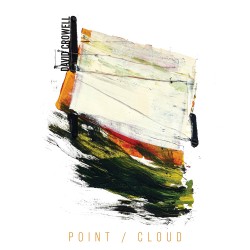 David Crowell is a New York-based composer and instrumentalist who is active in the fields of contemporary classical composition, improvisation, jazz and experimental rock and pop. His latest release Point / Cloud (Better Company Records davidcrowellmusic.com/music) features four compositions performed by Sandbox Percussion, guitarists Dan Lippel and Mak Grgić, and the duo eco|tonal. The percussion work Verses for a Liminal Space is a gentle piece full of bell sounds, vibraphone and marimba ostinati underscored by subtle drum kit beats. The title work is a response to Steve Reich’s Electric Counterpoint from 1987. Like that iconic work, Point / Cloud is in three movements in which the solo guitarist plays against tracks they have previously recorded. Lippel, who consulted with Reich for his own recording of Electric Counterpoint, is the guitarist here and gives a nuanced and well-balanced performance of this effective tribute, which, while acknowledging its forebear, avoids being derivative. For Pacific Coast Highway Lippel is joined by Grgić in a classical guitar duet version of a work Crowell originally composed for electric guitar and electric bass. It’s a wild ride “via dancelike passages that bend and wind after their namesake.” The most intriguing work is the final one, 2 Hours in Zadar featuring the meditative duo eco|tonal consisting of Crowell and cellist/singer/improviser Iva Casián-Lakoš. The text is drawn from a poem by Casián-Lakoš’ mother Nela Lakoš. “Subtle utterances of Casián-Lakoš speaking Croatian are blended with organ-like electronics, which are derived from manipulations of [her] voice. […] Eventually, samples of a sound unique to the city of Zadar makes its presence known: The Sea Organ. A symbiosis of human architecture and the unpredictability of nature, this ‘organ’ is a marble stair in the Croatian coastal city that contains an assortment of pipes in its steps, which are ‘played’ by the ebb and flow of waves.” The sounds are haunting and captivating, as is the entire disc.
David Crowell is a New York-based composer and instrumentalist who is active in the fields of contemporary classical composition, improvisation, jazz and experimental rock and pop. His latest release Point / Cloud (Better Company Records davidcrowellmusic.com/music) features four compositions performed by Sandbox Percussion, guitarists Dan Lippel and Mak Grgić, and the duo eco|tonal. The percussion work Verses for a Liminal Space is a gentle piece full of bell sounds, vibraphone and marimba ostinati underscored by subtle drum kit beats. The title work is a response to Steve Reich’s Electric Counterpoint from 1987. Like that iconic work, Point / Cloud is in three movements in which the solo guitarist plays against tracks they have previously recorded. Lippel, who consulted with Reich for his own recording of Electric Counterpoint, is the guitarist here and gives a nuanced and well-balanced performance of this effective tribute, which, while acknowledging its forebear, avoids being derivative. For Pacific Coast Highway Lippel is joined by Grgić in a classical guitar duet version of a work Crowell originally composed for electric guitar and electric bass. It’s a wild ride “via dancelike passages that bend and wind after their namesake.” The most intriguing work is the final one, 2 Hours in Zadar featuring the meditative duo eco|tonal consisting of Crowell and cellist/singer/improviser Iva Casián-Lakoš. The text is drawn from a poem by Casián-Lakoš’ mother Nela Lakoš. “Subtle utterances of Casián-Lakoš speaking Croatian are blended with organ-like electronics, which are derived from manipulations of [her] voice. […] Eventually, samples of a sound unique to the city of Zadar makes its presence known: The Sea Organ. A symbiosis of human architecture and the unpredictability of nature, this ‘organ’ is a marble stair in the Croatian coastal city that contains an assortment of pipes in its steps, which are ‘played’ by the ebb and flow of waves.” The sounds are haunting and captivating, as is the entire disc.
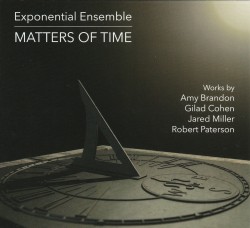 Founded in 2011 by clarinetist Pascal Archer, Exponential Ensemble is a mixed chamber music collective (flute, clarinet, oboe, bassoon, violin, viola, cello and piano, supplemented with horn, trumpet and an additional violin here), whose unusual mission includes commissioning and premiering works that are inspired by math, science and literacy. Matters of Time (American Modern Recordings AMR1055 americanmodernrecordings.com) features four quite different works that approach this mandate in varying ways. Amy Brandon says “Crown of the Sun is a reflection on the physical nature of the sun’s corona contrasted with the deep emptiness of space. NASA recently sonified the radiation patterns that the sun emits, and I found a particular connection between this sound and the complex and beautiful sound of oboe multiphonics, which is why they are referenced throughout this piece, to essentially sonify the varying states of the sun’s corona in sound.” A Dark Matter by Gilead Cohen “explores the notion that our mind also sometimes circles around an […] indefinable worry, regret, or fear [that] can occupy us for a long time and color everything else in dark shades. At the core of this piece is such musical ‘dark matter.’” The Bright Exuberant Silence by Jared Miller gives us a curiously positive glimpse at the lockdowns of 2020, inspired by that “fleeting and eerie moment in modern history when the world was put on pause due to COVID-19 [and] nature began to heal. Pollution started to clear in the air as fewer people drove cars to work every day. Birdsong was audible in silent metropolises [and] you could even see the stars in the sky in the middle of Manhattan on some nights. Nature began to overtake cities quietly and holistically – and for a moment, urban dwellers learned what it was like to peacefully coexist with the natural world.” Both Miller’s and Brandon’s work were commissioned with the support of the Canada Council. The disc is completed by a surprisingly lyrical, playful and somewhat anachronistic work, to my ear reminiscent of the music of Francis Poulenc, by Robert Paterson. Relative Theory is in four movements that reference physicists and mathematicians Blaise Pascal, Emmy Noether, Albert Einstein and Pythagoras. Paterson says he was inspired by how much the Exponential Ensemble enjoy performing programs for children that relate math to music. “In a fun, yet hopefully meaningful way, the movements of my piece are designed to draw parallels between these two distinct, but interrelated worlds.” It certainly is fun, especially Einstein’s Daydream with its quotations from Bach, Beethoven and Mozart, and the rollicking finale The Hammers of Pythagoras.
Founded in 2011 by clarinetist Pascal Archer, Exponential Ensemble is a mixed chamber music collective (flute, clarinet, oboe, bassoon, violin, viola, cello and piano, supplemented with horn, trumpet and an additional violin here), whose unusual mission includes commissioning and premiering works that are inspired by math, science and literacy. Matters of Time (American Modern Recordings AMR1055 americanmodernrecordings.com) features four quite different works that approach this mandate in varying ways. Amy Brandon says “Crown of the Sun is a reflection on the physical nature of the sun’s corona contrasted with the deep emptiness of space. NASA recently sonified the radiation patterns that the sun emits, and I found a particular connection between this sound and the complex and beautiful sound of oboe multiphonics, which is why they are referenced throughout this piece, to essentially sonify the varying states of the sun’s corona in sound.” A Dark Matter by Gilead Cohen “explores the notion that our mind also sometimes circles around an […] indefinable worry, regret, or fear [that] can occupy us for a long time and color everything else in dark shades. At the core of this piece is such musical ‘dark matter.’” The Bright Exuberant Silence by Jared Miller gives us a curiously positive glimpse at the lockdowns of 2020, inspired by that “fleeting and eerie moment in modern history when the world was put on pause due to COVID-19 [and] nature began to heal. Pollution started to clear in the air as fewer people drove cars to work every day. Birdsong was audible in silent metropolises [and] you could even see the stars in the sky in the middle of Manhattan on some nights. Nature began to overtake cities quietly and holistically – and for a moment, urban dwellers learned what it was like to peacefully coexist with the natural world.” Both Miller’s and Brandon’s work were commissioned with the support of the Canada Council. The disc is completed by a surprisingly lyrical, playful and somewhat anachronistic work, to my ear reminiscent of the music of Francis Poulenc, by Robert Paterson. Relative Theory is in four movements that reference physicists and mathematicians Blaise Pascal, Emmy Noether, Albert Einstein and Pythagoras. Paterson says he was inspired by how much the Exponential Ensemble enjoy performing programs for children that relate math to music. “In a fun, yet hopefully meaningful way, the movements of my piece are designed to draw parallels between these two distinct, but interrelated worlds.” It certainly is fun, especially Einstein’s Daydream with its quotations from Bach, Beethoven and Mozart, and the rollicking finale The Hammers of Pythagoras.
Listen to 'Matters of Time' Now in the Listening Room
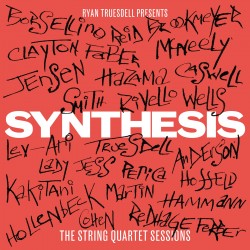 I began this column writing about string quartet transcriptions for saxophones, and this latest arrival seems, in a way, to bring me full circle. Russell Truesdell Presents SYNTHESIS – The String Quartet Sessions (SynthesisSQS.com) is a mammoth project for which Truesdell invited 15 large ensemble jazz composers to write for the iconic classical string formation. Truesdell says the project grew out of the isolation of the pandemic. “I wanted to find a way to inspire and challenge large ensemble composers – myself included – at a time when we were feeling hopeless for the future of our artform [...] The idea for SYNTHESIS came from the knowledge that many jazz composers derive inspiration from the string quartet writing of composers like Bartok, Brahms, and Ravel, and the necessity of finding a realistic, yet inspiring way to create music together, safely, in person. [...] I wanted to hear my peers, whom I respect and whose music I love so much, create something new in this idiom.” The 3CD set has kept me enthralled throughout my first listening – it arrived as I was putting the finishing touches on this column, so I haven’t had time to properly immerse myself in it yet – and although there is simply too much material to deal with in detail, I wanted to share my enthusiasm with you. Truesdell gave the composers very few parameters in terms of length or style to guide them, and I was particularly taken with the range of approaches taken. While most of the works were composed specifically for this project, also included are a previously unrecorded work for string trio from 1990 by Bob Brookmeyer and a reworking of John Hollenbeck’s Grey Cottage, originally for solo violin, for quartet with the composer adding drums, marimba and piano. Most of the composers have chosen to stick within the traditional quartet formation of two violins, viola and cello, but several feature soloists within this context, including Christine Jensen whose lovely Tilting World features violin soloist Sara Caswell. Truesdell, who himself contributed three titles, adds Israeli-born clarinetist Anat Cohen for Suite for Clarinet and String Quartet and bassist Jay Anderson to the quartet in Heart of Gold (for Jody) which is a showcase for cellist Jody Redhage Ferber. To quote the press release: “SYNTHESIS challenges old perceptions of the traditional string quartet [...] exploring a new genre of music cultivated at the intersection of jazz, classical, world, and contemporary music.” It does so admirably.
I began this column writing about string quartet transcriptions for saxophones, and this latest arrival seems, in a way, to bring me full circle. Russell Truesdell Presents SYNTHESIS – The String Quartet Sessions (SynthesisSQS.com) is a mammoth project for which Truesdell invited 15 large ensemble jazz composers to write for the iconic classical string formation. Truesdell says the project grew out of the isolation of the pandemic. “I wanted to find a way to inspire and challenge large ensemble composers – myself included – at a time when we were feeling hopeless for the future of our artform [...] The idea for SYNTHESIS came from the knowledge that many jazz composers derive inspiration from the string quartet writing of composers like Bartok, Brahms, and Ravel, and the necessity of finding a realistic, yet inspiring way to create music together, safely, in person. [...] I wanted to hear my peers, whom I respect and whose music I love so much, create something new in this idiom.” The 3CD set has kept me enthralled throughout my first listening – it arrived as I was putting the finishing touches on this column, so I haven’t had time to properly immerse myself in it yet – and although there is simply too much material to deal with in detail, I wanted to share my enthusiasm with you. Truesdell gave the composers very few parameters in terms of length or style to guide them, and I was particularly taken with the range of approaches taken. While most of the works were composed specifically for this project, also included are a previously unrecorded work for string trio from 1990 by Bob Brookmeyer and a reworking of John Hollenbeck’s Grey Cottage, originally for solo violin, for quartet with the composer adding drums, marimba and piano. Most of the composers have chosen to stick within the traditional quartet formation of two violins, viola and cello, but several feature soloists within this context, including Christine Jensen whose lovely Tilting World features violin soloist Sara Caswell. Truesdell, who himself contributed three titles, adds Israeli-born clarinetist Anat Cohen for Suite for Clarinet and String Quartet and bassist Jay Anderson to the quartet in Heart of Gold (for Jody) which is a showcase for cellist Jody Redhage Ferber. To quote the press release: “SYNTHESIS challenges old perceptions of the traditional string quartet [...] exploring a new genre of music cultivated at the intersection of jazz, classical, world, and contemporary music.” It does so admirably.
Listen to 'SYNTHESIS: The String Quartet Sessions' Now in the Listening Room
We invite submissions. CDs, DVDs and comments should be sent to: DISCoveries, The WholeNote c/o Music Alive, The Centre for Social Innovation, 720 Bathurst St. Toronto ON M5S 2R4 or to discoveries@thewholenote.com.



